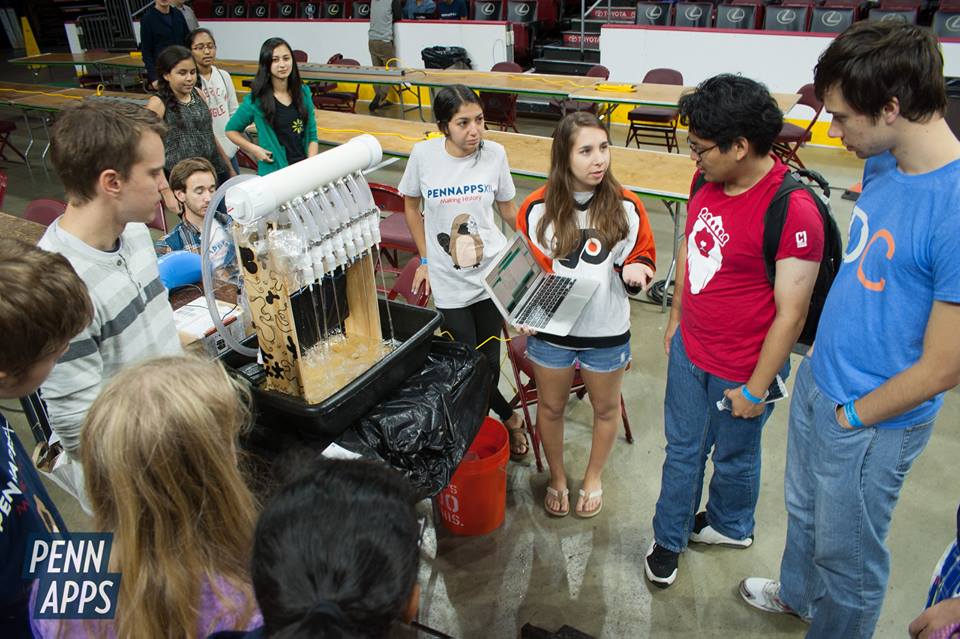In the twelfth edition of one of the world’s largest hackathons, PennApps found a new home at the Wells Fargo Center this past weekend.
Over 1,500 hackers, including 618 high school students, spent the weekend hunched over laptops and tinkering with hardware, surrounded by the memorabilia of the city’s usual heroes of choice — beloved sports teams with very few title wins. Yet with an increased interested health hacks and a new budding relationship with Comcast, PennApps might just be a hint a new type of champion for the city to cherish.
The move from the event’s original — and often crowded — home base of Penn’s engineering buildings was made possible by Comcast, the PennApps sponsor that covered the cost of Wells Fargo for the weekend. The face of this collaboration was Sam Schwartz, the Chief Development Officer of Comcast Cable and a founding partner of Comcast Ventures. One of the hopes for this partnership is to continue to develop a name for Philadelphia as the East Coast equivalent of Silicon Valley.
“My ambition is that Comcast can help the city continue building it’s hierarchy of innovation,” Schwartz said.
Beyond aiming to help make Philadelphia a gamechanger for entrepreneurs, Comcast’s interest in PennApps and the students who will eventually graduate into the tech sector is obvious. The new center city skyscraper the cable giant is building will be “revolutionary” according to Schwartz, with 50 floors of open office plans dedicated solely to R&D that will need to be filled with technologists.

The weekend saw hundreds of combined hours dedicated to technological innovation, over $63,000 worth of prizes, and many big-name sponsors. In the end the grand prize, which included a trip to Facebook headquarters and lots of other name-brand swag, went to a hardware hack for the visually impaired.
5th Sense was developed by Edward Ahn, Cyrus Tabrizi, Rajat Mehndiratta and Vasu Agrawal — all robotics students at Carnegie Mellon. Their device uses six buttons to allow visually impaired individuals to input braille to a smartphone-compatible app that can function as a personal assistant and also receive texts and other messages in braille through vibrations. The device also has a distance sensor attached so the user doesn’t need a cane, but rather can tell where objects are through vibrations.
Watch the closing ceremony below.







